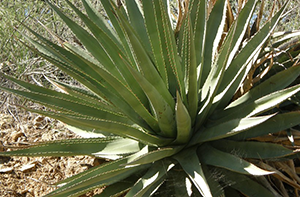Photo Credit: ©2016 Wynn Anderson. Creative Commons Attribution-NonCommercial-ShareAlike 3.0 (CC BY-NC-SA 3.0) License, https://creativecommons.org/licenses/by-nc-sa/3.0/
Agave palmeri
Common Name: Palmer's century plant
Other Common Names: Palmer agave, Palmer century plant
Plant Functional Group: Evergreen broadleaf
Class > Order > Family: Magnoliopsida > Asparagales > Asparagaceae
